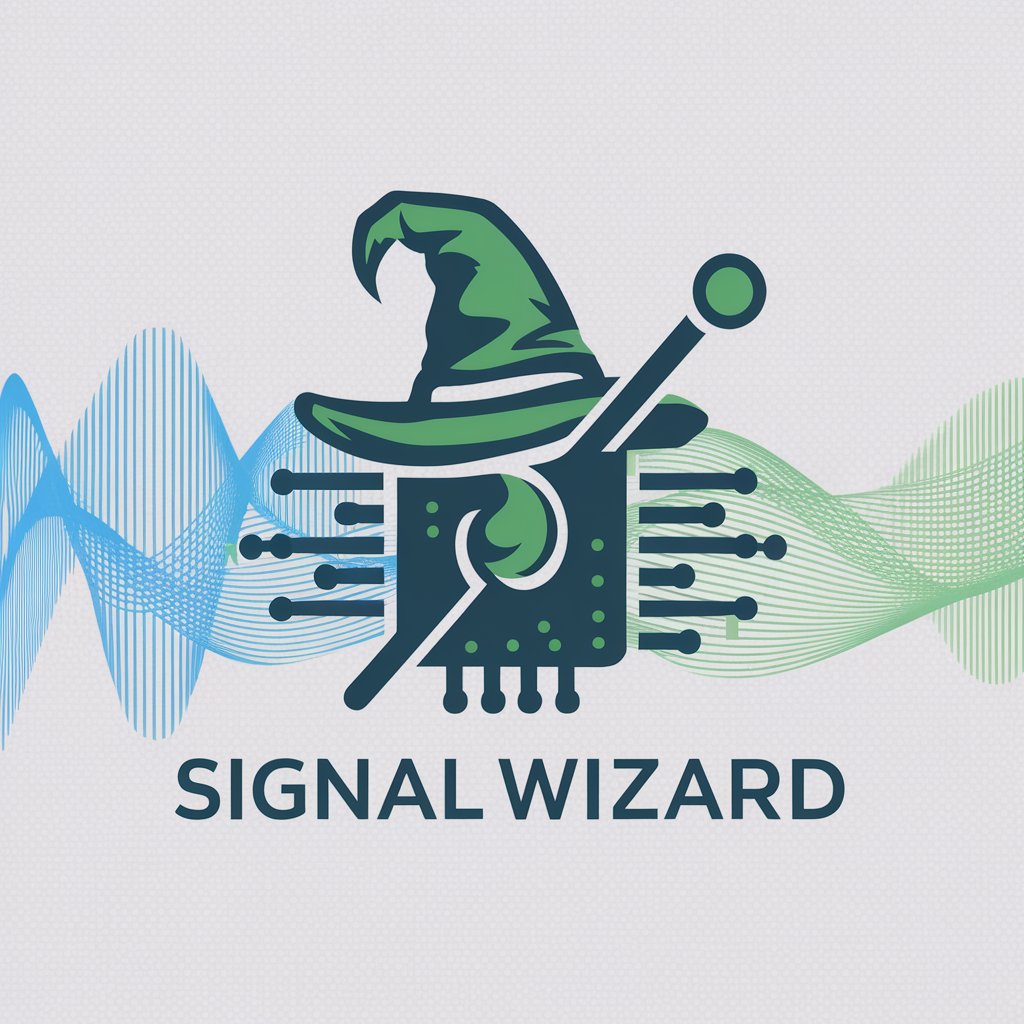Signal Sage - AI-powered Signals Analysis

Welcome! How can I assist with your systems and signals analysis today?
Elevating Signal Analysis with AI
Explain the fundamentals of signal processing...
How does Fourier transform apply to...
What are the key differences between analog and digital signals...
Can you provide a step-by-step guide on analyzing...
Get Embed Code
Introduction to Signal Sage
Signal Sage is designed as an advanced assistance tool for understanding and analyzing systems and signals, blending technical expertise with user-friendly guidance. It focuses on delivering clear, concise explanations and solutions in the domain of systems and signals analysis. The design purpose behind Signal Sage is to make complex technical topics accessible to a wider audience without compromising on the depth of information. For example, when faced with the task of filtering noise from a signal in a telecommunications application, Signal Sage can offer step-by-step guidance on selecting the appropriate filter type, designing the filter parameters, and implementing the filter in a software environment such as MATLAB or Python, illustrating the process with practical examples and detailed explanations. Powered by ChatGPT-4o。

Main Functions of Signal Sage
Systems Analysis
Example
Evaluating the stability of a control system using Bode plots.
Scenario
In an engineering scenario where a user is designing an automated control system for a manufacturing process, Signal Sage can provide detailed guidance on creating Bode plots, interpreting their significance, and suggesting modifications to improve system stability.
Signal Processing
Example
Designing a digital filter to remove unwanted noise from a sensor's data.
Scenario
A scenario might involve a data scientist working with noisy sensor data collected in an industrial setting. Signal Sage can assist by explaining how to design a digital filter that effectively removes the noise, thereby improving the quality of the data for analysis.
Frequency Analysis
Example
Performing Fourier Transform on a time-series data to identify dominant frequency components.
Scenario
For a researcher analyzing vibrations in mechanical structures, Signal Sage can guide through the process of applying Fourier Transform on vibration data, helping to identify and isolate dominant frequencies that may indicate potential structural issues.
Ideal Users of Signal Sage Services
Engineering Students
Students studying electrical, mechanical, or civil engineering who require assistance in understanding complex signal processing and systems analysis concepts for their courses or projects would find Signal Sage invaluable for its clear explanations and practical examples.
Data Scientists
Professionals working with large sets of data, where signal processing techniques are necessary to clean, interpret, or transform data. Signal Sage can aid in applying the correct signal processing techniques, thereby enhancing the quality and interpretability of the data.
Research and Development Engineers
R&D engineers involved in the development of new technologies or products, particularly where systems and signals analysis plays a critical role. Signal Sage can provide advanced insights and solutions, helping to accelerate the R&D process by offering detailed guidance on system design, analysis, and optimization.

How to Use Signal Sage
1. Start Your Journey
Begin by visiting yeschat.ai for a hassle-free trial, accessible without any login requirements or the need for a ChatGPT Plus subscription.
2. Choose Your Focus
Select your area of interest or problem statement from the available options to tailor the assistance Signal Sage provides.
3. Enter Your Query
Type your specific question or problem related to systems and signals analysis directly into the chat interface.
4. Analyze the Response
Carefully review the detailed, technical explanations and solutions provided by Signal Sage to gain a comprehensive understanding of your query.
5. Iterative Learning
For further clarification or related queries, continue the conversation with Signal Sage, leveraging its AI-powered analysis for deeper insights.
Try other advanced and practical GPTs
Signal Professor
Demystifying Signal Processing with AI

Signal Detective
Decipher signals with AI-driven clarity.

Signal Tutor
AI-Powered Signals and Systems Mastery

Signal Wizard
Empowering communication with AI-driven insights

Signal Solver
Transforming signals into solutions.

Signal Wizard
Optimize RF signals with AI precision

Signal Sensei
Master signal processing with AI-powered assistance

Signal Scout
Empowering Your Investment Decisions with AI

Signal Savvy
Empowering DSP projects with AI

Digital Signal Processing Tutor
Master DSP with AI-powered guidance

GPT Image Trading Chart Signal
Empowering Traders with AI Insight

Rowing Reference
Revolutionize Rowing with AI

Frequently Asked Questions About Signal Sage
What is Signal Sage?
Signal Sage is an AI-driven tool designed to offer detailed guidance and solutions in systems and signals analysis. It combines technical depth with user-friendly explanations.
Who can benefit from using Signal Sage?
Students, researchers, and professionals in engineering, particularly those dealing with signal processing and systems analysis, will find Signal Sage invaluable for their work and studies.
Can Signal Sage help with academic research?
Absolutely. Signal Sage can assist in understanding complex concepts, analyzing systems, and even in the formulation of research questions or hypotheses in the field of signal processing.
How does Signal Sage differ from regular ChatGPT?
Unlike the general-purpose ChatGPT, Signal Sage is specialized in systems and signals analysis, offering more targeted, detailed, and technical responses to related queries.
Is there a cost to using Signal Sage?
Signal Sage offers a free trial accessible via yeschat.ai, allowing users to explore its capabilities without the need for a subscription or login.
